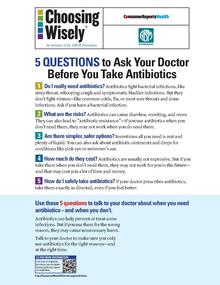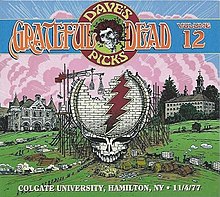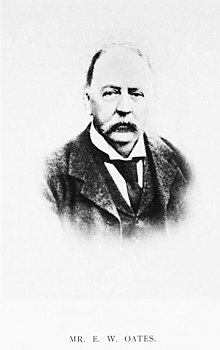항생제 오용
Antibiotic misuse항생제 오남용은 항생제 남용이나 항생제 남용으로도 불리며, 건강에 심각한 영향을 미칠 가능성이 있는 항생제의 오남용을 말한다. 비공식적으로 '슈퍼 벌레'라고 불리는 다제내성 박테리아(스파틸로코쿠스, 엔테로코쿠스, 아세네토박터 등)의 생성을 포함한 항생제 내성 개발에 기여하는 요인이다.[1]
항생제 규제 이력
항생제는 페니실린이 알렉산더 플레밍에 의해 발견된 1928년부터 있어왔다. 1980년대에는 동물 치료를 위해 의학적으로 중요하다고 판단된 항생제가 수의학 감독하에 승인될 수 있었다. 1996년에는 국가항균저항감시시스템(NARMS)이 구축되었다.[2] 2010년부터 식품의 항균제에 관한 출판물이 연례 보고서가 되었다. 2012년부터는 식량을 생산하는 동물에 대한 항균제 사용과 관련된 사항에 대해 데이터를 수집하고 보고하는 방법에 대한 공개적인 의견을 구했다. 이에 따라 FDA는 감시를 받고 있는 주요 유기체에 대한 대표 가축 데이터를 더 많이 확보할 목적으로 NARMS 내 샘플링 구조를 수정했다.[2] CDC와 USDA의 NARMS 파트너는 식품을 생산하는 동물에서 항생제 사용과 관련된 항균 저항성 위험의 특성과 크기를 조사하는 150개 이상의 동료 검토 연구 논문을 발표했다. 2014년 FDA는 미국 농무부(USDA), 질병관리본부(CDC)와 함께 식품 생산 동물에서 항생제 사용을 대표하는 데이터를 얻기 위한 추가적인 메커니즘을 탐색하기 시작했다. 2015년 FDA는 수의사가 자신이 봉사하는 동물에게 사료 내 항균제 사용을 허가해야 한다는 수의사 사료 지침(VFD) 최종 규정을 제정했다.[2]
항생제 오용의 예
항생제는 바이러스성 감염보다는 세균 감염을 치료한다.
항생제가 과다하게 사용되는 일반적인 상황은 다음과 같다.[3]
- 어린이들의 명백한 바이러스성 호흡기 질환은 항생제로 치료해서는 안 된다. 박테리아 감염의 진단이 있을 경우 항생제를 사용할 수 있다.[4]
- 귀관아동이 귀염에 걸리면 원치 않는 부작용을 일으킬 가능성이 높은 구강 항생제보다는 항생제 고막을 귀에 넣어 감염에 가도록 해야 한다.[5]
- 수영 선수의 귀는 구강 항생제가 아닌 항생제 고막으로 치료해야 한다.[6]
- 축농증은 대개 바이러스에 의해 발생하기 때문에 항생제로 치료해서는 안 되며, 세균에 의해 발생하더라도 보통 치료 없이 낫기 때문에 비정형적인 상황 외에는 항생제가 표시되지 않는다.[7]
- 바이러스성 결막염은 항생제로 치료해서는 안 된다. 항생제는 환자가 세균성 결막염에 걸렸다는 확인과 함께 사용해야 한다.[8]
- 노인들은 소변에서 세균이 발견되는 경우가 많은데, 요로감염 증상이 없는 한 항생제를 대응해선 안 된다.[9]
- 습진은 구강 항생제로 치료해서는 안 된다. 건조한 피부는 로션이나 다른 증상 치료로 치료할 수 있다.[10]
- 외과적 상처를 치료하기 위해 국소 항생제를 사용한다고 해서 비항생제 연고나 전혀 연고가 없는 것에 비해 감염률이 감소되는 것은 아니다.[10]
- 여드름에 복시클린을 사용하는 것은 크론병의 위험 증가와 관련이 있다.[11]
- 여드름에 미노시클린을 사용하는 것은 피부 및 장 질환과 관련이 있다.[12]
항생제 오용의 사회적 경제적 영향
항생제는 심각한 반응을 일으킬 수 있고 치료비를 크게 증가시킬 수 있다.[13] 미국에서는 항생제와 항감염제가 약물 부작용의 주요 원인이다. 2011년 32개 주를 대상으로 한 연구에서 항생제와 감염 방지제는 입원 시 존재하는 ADE의 24%를 차지했고, 입원 시 발생한 ADE의 28%를 차지했다.[14]
항균저항이 현재 수준보다 계속 증가하면 2050년까지 매년 1000만명이 치료 부족으로 사망하고 2050년에는 세계 GDP가 2~3.5% 낮아질 것으로 추산된다.[15] 항생제 오남용을 퇴치하고 항생제 내성을 개발하기 위해 전 세계적인 조치가 취해지지 않는다면 2014~2050년부터 3억 명이 약물 내성으로 조기 사망하고 60조~100조 달러의 경제적 생산량이 손실될 것으로 추산된다.[15] 현재의 전 세계 항생제 내성 개발이 10년만 늦춰지면 2014~2050년 세계 GDP의 65조 달러를 절감할 수 있다.[15]
비감염성 질환 전문의의 처방과 비교해 감염성 질환 전문가가 처방하면 항생제 소비가 줄고 비용도 줄어든다.[16]
항생제 내성
심각한 박테리아 감염을 치료하기 위해서는 항생제가 필요하지만, 오용은 박테리아 내성을 높이는 데 기여했다.[17] 플루오로퀴놀론과 다른 항생제의 과다 사용은 박테리아 내 항생제 내성을 촉진시켜 항생제 내성 감염의 치료를 억제할 수 있다.[18][19][20] 그들이 이염 매개체가 있는 어린이들에게 과도하게 사용함으로써 항생제에 내성이 있는 박테리아의 종류가 생겨났다.[21] 또한 건축 자재와 개인 관리 제품에 항균 물질을 사용하는 것은 인간이 삶의 대부분을 보내는 실내 환경에서 항생제 내성균의 비율이 더 높은 데 기여했다.[22]
1차 항생제로 플루오로퀴놀론을 널리 사용함으로써 항생제 민감도가 저하되었으며, 키놀론이 몇 가지 생존 가능한 항생제 중 하나인 낭포성 섬유증과 같은 심각한 박테리아 감염에 부정적인 영향을 미치고 있다.[23][24][25]
부적절한 사용
인간의 건강
항생제는 감기 등 바이러스성 감염에는 효과가 없다. 그들은 또한 보통 바이러스성이고 자가 분해되는 목의 통증에도 효과적이지 않다.[26] 기관지염의 경우 대부분 (90~95%)도 바이러스성인데, 몇 주가 지나면 기관지염에 대한 항생제 사용이 불필요해 환자가 부작용을 겪을 위험에 처할 수 있다.[27] 바이러스에 감염되었을 때 항생제를 복용하면 항생제는 몸에 유익하거나 적어도 질병을 일으키지 않는 박테리아인 박테리아를 공격한다. 이 잘못된 치료법은 다른 박테리아와 공유할 수 있는 무해한 박테리아에서 항생제 내성을 촉진하거나 잠재적으로 유해한 박테리아가 무해한 박테리아를 대체할 수 있는 기회를 만들 수 있다.[28]
치과 항생제 예방에 대한 미국 심장 협회의 공식 지침은 감염성 심내막염을 예방하기 위한 항생제 투여를 요구하고 있다. 현행(2007) 지침에서는 항생제 사용이 제한되고 있지만, 많은 치과의사와[29] 치과 환자들은[30] 대신 1997년 지침을 따르고 있어 항생제의 과다 사용이 초래된다.[31]
임페리얼 칼리지 런던의 2017년 2월 연구는 20개의 온라인 웹사이트 중 9개가 영국 주민들에게 처방전 없이 항생제(불법)를 제공할 것이라는 사실을 발견했다.[32]
연구들은 흔한 가벼운 질병을 치료하기 위한 항생제의 효과와 필요성에 대한 일반적인 오해들이 그들의 과용에 기여한다는 것을 보여주었다.[33][34]
가축
동물 사육에서는 항생제가 상당히 많이 사용되어 왔다. 세계적으로 항생제가 가장 많이 사용되는 곳은 가축으로 질병 예방과 성장 촉진과 같은 목적으로 동물 사료나 물에 주로 유통된다.[35] 이러한 항생제, 특히 항생제 성장 촉진제가 인간의 항생제 내성에 미치는 영향의 정도를 둘러싸고 논란이 일고 있다. 비록 몇몇 소식통은 지식에 대한 항생제 사용 humans,[36]정책과 규제에 가장 위험을 생성하는 부족 박테리아 가축에 항생제 내성의 가능성과 같은 어떠한 악영향을 제한할 것이라고 하며, 박테리아 인간에 대한 내성 유전자 전달 patho 놓여 있고 주장하고 있습니다.정보이미 많은 나라들이 성장 촉진을 금지하고 있으며 유럽연합은 2006년부터 성장 촉진을 위한 항생제 사용을 금지하고 있다.[38] 2017년 1월 1일, FDA는 모든 인간 의학적으로 중요한 사료 등급 항생제(많은 이전 처방전 약품)를 수의사료 지침 의약품(VFD)으로 분류하도록 하는 법률을 제정했다. 이 조치는 농부들이 수의사들과 함께 VFD 서면 명령을 받을 것을 요구한다.[39] 이 법의 영향은 확립된 수의사와 의뢰인-환자 관계(VCPR)에 요건을 부여한다. 이 관계를 통해 농가는 수의사로부터 조언과 지도 등의 형태로 교육을 받게 된다. 음식에 내성이 있는 박테리아는 사람에게 감염을 일으킬 수 있다. 인간과 비슷하게, 식용 동물에게 항생제를 주는 것은 대부분의 박테리아를 죽일 것이지만, 저항성 박테리아는 살아남을 수 있다. 식용 동물이 도살되고 가공될 때, 동물의 내장에 있는 저항성 세균은 고기나 다른 동물 제품을 오염시킬 수 있다. 동물의 내장에서 나오는 저항성 세균은 또한 동물의 배설물로부터 물과 흙과 같은 환경으로 들어갈 수 있다. 만약 동물 배설물이나 저항성 세균이 함유된 물을 비료나 관개물로 과일, 야채, 또는 다른 생산물에 사용한다면, 이것은 저항성 세균을 퍼뜨릴 수 있다.[40]
참고 항목
참조
- ^ Harrison JW, Svec TA (April 1998). "The beginning of the end of the antibiotic era? Part II. Proposed solutions to antibiotic abuse". Quintessence International. 29 (4): 223–9. PMID 9643260.
- ^ a b c Food Insight (2016). "FDA Antibiotic Regulation Through the Decades".
{{cite journal}}: Cite 저널은 필요로 한다.journal=(도움말) - ^ "Antibiotics: Are you misusing them?". Mayo Clinic. Retrieved 9 October 2020.
- ^ American Academy of Pediatrics, "Five Things Physicians and Patients Should Question", Choosing Wisely: an initiative of the ABIM Foundation, American Academy of Pediatrics, retrieved 1 August 2013, 어느 것을 인용하는가.
- American Academy of Pediatrics Subcommittee on Diagnosis and Management of Bronchiolitis (2006). "Diagnosis and Management of Bronchiolitis". Pediatrics. 118 (4): 1774–1793. doi:10.1542/peds.2006-2223. PMID 17015575.
{{cite journal}}: CS1 maint: 작성자 매개변수 사용(링크) - Shulman, S. T.; Bisno, A. L.; Clegg, H. W.; Gerber, M. A.; Kaplan, E. L.; Lee, G.; Martin, J. M.; Van Beneden, C. (2012). "Clinical Practice Guideline for the Diagnosis and Management of Group a Streptococcal Pharyngitis: 2012 Update by the Infectious Diseases Society of America". Clinical Infectious Diseases. 55 (10): e86–102. doi:10.1093/cid/cis629. PMC 7108032. PMID 22965026.
- American Academy of Pediatrics Subcommittee on Diagnosis and Management of Bronchiolitis (2006). "Diagnosis and Management of Bronchiolitis". Pediatrics. 118 (4): 1774–1793. doi:10.1542/peds.2006-2223. PMID 17015575.
- ^ American Academy of Otolaryngology–Head and Neck Surgery, "Five Things Physicians and Patients Should Question", Choosing Wisely: an initiative of the ABIM Foundation, American Academy of Otolaryngology–Head and Neck Surgery, retrieved 1 August 2013
{{citation}}: CS1 maint : 작성자 매개변수(링크) 사용, 인용- Rosenfeld, R. M.; Schwartz, S. R.; Pynnonen, M. A.; Tunkel, D. E.; Hussey, H. M.; Fichera, J. S.; Grimes, A. M.; Hackell, J. M.; Harrison, M. F.; Haskell, H.; Haynes, D. S.; Kim, T. W.; Lafreniere, D. C.; LeBlanc, K.; Mackey, W. L.; Netterville, J. L.; Pipan, M. E.; Raol, N. P.; Schellhase, K. G. (2013). "Clinical Practice Guideline: Tympanostomy Tubes in Children". Otolaryngology–Head and Neck Surgery. 149 (1 Suppl): S1–S35. doi:10.1177/0194599813487302. ISSN 0194-5998. PMID 23818543.
- ^ American Academy of Otolaryngology–Head and Neck Surgery (February 2013), "Five Things Physicians and Patients Should Question", Choosing Wisely: an initiative of the ABIM Foundation, American Academy of Otolaryngology–Head and Neck Surgery, retrieved 1 August 2013
{{citation}}: CS1 maint : 작성자 매개변수(링크) 사용, 인용- Rosenfeld, R.; Brown, L.; Cannon, C.; Dolor, R.; Ganiats, T.; Hannley, M.; Kokemueller, P.; Marcy, S.; Roland, P.; Shiffman, R.; Stinnett, S. S.; Witsell, D. L.; American Academy of Otolaryngology–Head and Neck Surgery Foundation (2006). "Clinical practice guideline: Acute otitis externa". Otolaryngology–Head and Neck Surgery. 134 (4): S4–23. doi:10.1016/j.otohns.2006.02.014. PMID 16638473. S2CID 20340836.
- ^ Consumer Reports; American Academy of Allergy, Asthma, and Immunology (July 2012), "Treating sinusitis: Don't rush to antibiotics" (PDF), Choosing Wisely: an initiative of the ABIM Foundation, Consumer Reports, retrieved 14 August 2012
{{citation}}: CS1 maint: 작성자 매개변수 사용(링크) - ^ Sheikh, Aziz; Hurwitz, Brian; van Schayck, Constant Paul; McLean, Susannah; Nurmatov, Ulugbek (12 September 2012). "Antibiotics versus placebo for acute bacterial conjunctivitis". The Cochrane Database of Systematic Reviews. 9 (9): CD001211. doi:10.1002/14651858.CD001211.pub3. ISSN 1469-493X. PMID 22972049.
- ^ American Geriatrics Society, "Five Things Physicians and Patients Should Question", Choosing Wisely: an initiative of the ABIM Foundation, American Geriatrics Society, retrieved 1 August 2013
- ^ a b American Academy of Dermatology (February 2013), "Five Things Physicians and Patients Should Question", Choosing Wisely: an initiative of the ABIM Foundation, American Academy of Dermatology, retrieved 5 December 2013, 어느 것을 인용하는가.
- Sheth, V. M.; Weitzul, S. (2008). "Postoperative topical antimicrobial use". Dermatitis : Contact, Atopic, Occupational, Drug. 19 (4): 181–189. doi:10.2310/6620.2008.07094. PMID 18674453.
- ^ Margolis, David J.; Fanelli, Matthew; Hoffstad, Ole; Lewis, James D. (2010). "Potential association between the oral tetracycline class of antimicrobials used to treat acne and inflammatory bowel disease". The American Journal of Gastroenterology. 105 (12): 2610–2616. doi:10.1038/ajg.2010.303. ISSN 1572-0241. PMID 20700115. S2CID 20085592.
- ^ Thompson, Katherine G.; Rainer, Barbara M.; Antonescu, Corina; Florea, Liliana; Mongodin, Emmanuel F.; Kang, Sewon; Chien, Anna L. (1 February 2020). "Minocycline and Its Impact on Microbial Dysbiosis in the Skin and Gastrointestinal Tract of Acne Patients". Annals of Dermatology. 32 (1): 21–30. doi:10.5021/ad.2020.32.1.21. ISSN 1013-9087. PMC 7992645. PMID 33911705.
- ^ Beringer PM, Wong-Beringer A, Rho JP (January 1998). "Economic aspects of antibacterial adverse effects". PharmacoEconomics. 13 (1 Pt 1): 35–49. doi:10.2165/00019053-199813010-00004. PMID 10175984. S2CID 25827533.
- ^ Weiss AJ, Elixhauser A. 미국 병원의 약물 부작용의 기원, 2011. HCUP 통계 개요 #158. 2013년 7월, 록빌의 의료 연구 및 품질 기관 [1]
- ^ a b c "Antimicrobial Resistance: Tackling a crisis for the health and wealth of nations" (PDF). Review on Antimicrobial Resistance.
- ^ Beović B., Kreft, Seme K., Čižman M. (2009). "The Impact of Total Control of Antibiotic Prescribing by Infectious Disease Specialist on Antibiotic Consumption and Cost". Journal of Chemotherapy. 21 (1): 46–51. doi:10.1179/joc.2009.21.1.46. PMID 19297272. S2CID 20534190.
{{cite journal}}: CS1 maint : 복수이름 : 작성자 목록(링크) - ^ "Reducing Antibiotic Exposure". Thermo Fisher. Retrieved 3 December 2021.
- ^ Neuhauser MM, Weinstein RA, Rydman R, Danziger LH, Karam G, Quinn JP (February 2003). "Antibiotic resistance among gram-negative bacilli in US intensive care units: implications for fluoroquinolone use". JAMA. 289 (7): 885–8. doi:10.1001/jama.289.7.885. PMID 12588273.
- ^ "Studies examine prescribing of antibiotics for respiratory infections in hospital emergency departments". USA: U.S. Department of Health and Human Services. Archived from the original on 7 May 2009.
From 1995 to 2002, inappropriate antibiotic prescribing for acute respiratory infections, which are usually caused by viruses and thus are not responsive to antibiotics, declined from 61% to 49%. However, the use of broad-spectrum antibiotics such as the fluoroquinolones, jumped from 41% to 77% from 1995 to 2001. Overuse of these antibiotics will eventually render them useless for treating antibiotic-resistant infections, for which broad-spectrum antibiotics are supposed to be reserved.
- ^ "Fluoroquinolone Resistance and Tuberculosis Treatment". USA: The New York City Department of Health and Mental Hygiene.
- ^ Froom J; Culpepper L; Jacobs M; et al. (July 1997). "Antimicrobials for acute otitis media? A review from the International Primary Care Network". BMJ. 315 (7100): 98–102. doi:10.1136/bmj.315.7100.98. PMC 2127061. PMID 9240050.
- ^ Hartmann, Erica; Hickey, Roxana; Hsu, Tiffany; Roman, Clarisse; Chen, Jing; Schwager, Randall; Kline, Jeff; Brown, G.; Halden, Rolf; Huttenhower, Curtis; Green, Jessica (20 September 2016). "Antimicrobial Chemicals Are Associated with Elevated Antibiotic Resistance Genes in the Indoor Dust Microbiome". Environmental Science & Technology. 50 (18): 9807–9815. Bibcode:2016EnST...50.9807H. doi:10.1021/acs.est.6b00262. PMC 5032049. PMID 27599587.
- ^ "Cipro, Related Antibiotics Over-Prescribed, Fueling Microbe Resistance". USA: University Of California. 1 October 2002. Retrieved 13 August 2009.
- ^ K. Bassett; B. Mintzes; V. Musini; T.L. Perry Jr; M. Wong; J.M. Wright (November 2002). "Therapeutics Letter" (PDF). Canadian Family Physician. 48. Archived from the original (PDF) on 14 April 2020.
Gatifloxacin and moxifloxacin have no proven clinical advantages over other fluoroquinolones, macrolides, or amoxicillin. Based on cost, they are not first-choice drugs for their approved indications.
- ^ Ziganshina, Lilia E.; Titarenko, Albina F.; Davies, Geraint R. (6 June 2013). "Fluoroquinolones for treating tuberculosis (presumed drug-sensitive)". The Cochrane Database of Systematic Reviews (6): CD004795. doi:10.1002/14651858.CD004795.pub4. ISSN 1469-493X. PMC 6532730. PMID 23744519.
- ^ Little P, Gould C, Williamson I, Warner G, Gantley M, Kinmonth AL (August 1997). "Reattendance and complications in a randomised trial of prescribing strategies for sore throat: the medicalising effect of prescribing antibiotics". BMJ. 315 (7104): 350–2. doi:10.1136/bmj.315.7104.350. PMC 2127265. PMID 9270458.
- ^ Hueston WJ (March 1997). "Antibiotics: neither cost effective nor 'cough' effective". The Journal of Family Practice. 44 (3): 261–5. PMID 9071245.
- ^ 메이요 클리닉
- ^ Zadik Y; Findler M; Livne S; et al. (December 2008). "Dentists' knowledge and implementation of the 2007 American Heart Association guidelines for the prevention of infective endocarditis". Oral Surg Oral Med Oral Pathol Oral Radiol Endod. 106 (6): e16–9. doi:10.1016/j.tripleo.2008.08.009. PMID 19000604.
- ^ Elad S, Binenfeld-Alon E, Zadik Y, Aharoni M, Findler M (March 2011). "Survey of acceptance of the 2007 American Heart Association guidelines for the prevention of infective endocarditis: a pilot study". Quintessence Int. 42 (3): 243–51. PMID 21465012.
- ^ Wilson W; Taubert KA; Gewitz M; et al. (October 2007). "Prevention of infective endocarditis: guidelines from the American Heart Association". Circulation. 116 (15): 1736–54. doi:10.1161/CIRCULATIONAHA.106.183095. PMID 17446442.
- ^ "No prescription needed to obtain antibiotics from almost half of online sites, study shows". Pharmaceutical Journal. 17 February 2017. Retrieved 19 March 2017.
- ^ Barnes, Sasha. "Rutgers study finds antibiotic overuse is caused by misconceptions, financial incentives". The Daily Targum.
- ^ Blaser, Martin J.; Melby, Melissa K.; Lock, Margaret; Nichter, Mark (16 February 2021). "Accounting for variation in and overuse of antibiotics among humans". BioEssays. 43 (2): 2000163. doi:10.1002/bies.202000163. PMID 33410142. S2CID 230811912 – via Wiley Online Library.
- ^ Silbergeld, E.K.; Graham, J.; Price, L.B. (2008), "Industrial food animal production, antimicrobial resistance, and human health", Annual Review of Public Health, 29: 151–169, doi:10.1146/annurev.publhealth.29.020907.090904, PMID 18348709
- ^ Landers, T.F.; Cohen, B.; Wittum, T.E.; Larson, E.L. (2012), "A review of antibiotic use in food animals: Perspective, policy, and potential", Public Health Reports, 127 (1): 4–22, doi:10.1177/003335491212700103, PMC 3234384, PMID 22298919
- ^ "Are antibiotics turning livestock into superbug factories?". 28 September 2017.
- ^ European Commission, Brussels (December 2005). "Ban on antibiotics as growth promoters in animal feed enters into effect".
- ^ Beth Ferry, Madonna Benjamin, Michigan State University Extension and Megan Sprague, MDARD (2016). "Don't wait, be ready! New antibiotic rules for 2017".
{{cite journal}}: Cite 저널은 필요로 한다.journal=(도움말)CS1 maint: 여러 이름: 작성자 목록(링크) - ^ CDC
추가 읽기
- Blaser, Martin J. (2014). Missing microbes : how the overuse of antibiotics is fueling our modern plagues. Henry Holt and Company. ISBN 978-0805098105. Archived from the original on 22 January 2014. Retrieved 26 February 2014.





